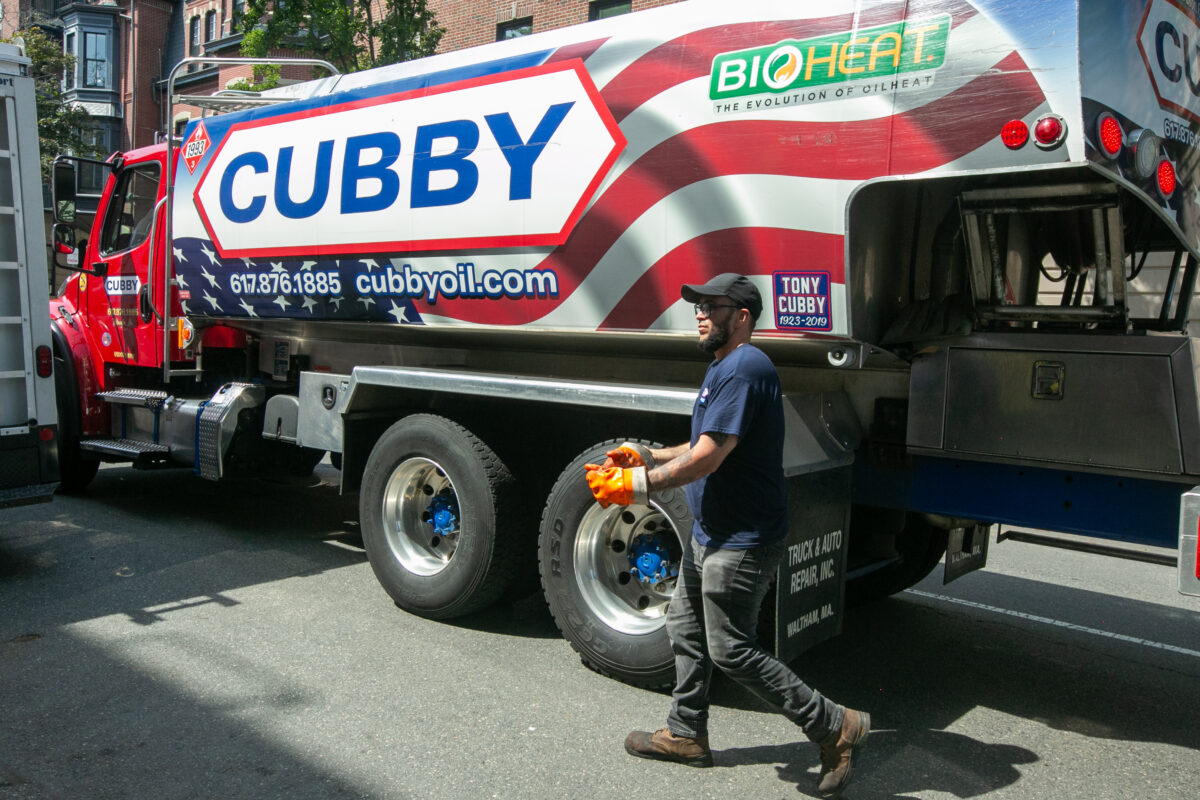Bioheat builds in Boston

After two decades of education, testing and transformation, a cleaner future for home heating is taking root in New England. Highlighted by a partnership among the United Soybean Board (USB), Clean Fuels Alliance America (CFAA) and local energy providers such as Cubby Oil and Energy, bioheat is delivering both environmental and economic benefits in one of the country’s oldest urban fuel markets.
“People want to do the right thing,” said Charlie Ugiletto, owner of Cubby Oil and a third-generation heating oil supplier in Boston. “They don’t want to spend a fortune doing it, but they’ll support companies making the effort. We’re doing the heavy lifting for them.”
Bioheat blends conventional heating oil with biodiesel, primarily made from U.S. soy. The result is a lower-carbon fuel that can be used in existing home heating systems without costly retrofitting, providing an alternative to expensive electric heat pumps or gas conversions.
The transition hasn’t been quick or easy. Paul Nazarro, founder and president of Advanced Fuel Solutions , has championed renewable fuels since the early 1990s, when he first saw biodiesel’s potential in transit buses.
“We’re trying to connect the dots,” said Nazarro. “From Midwest soybeans to Northeast fuel dealers, tracking how it goes and ensuring the consumer gets a reliable, competitive gallon of fuel.”
A Modern Renaissance for Heating Oil
For years, the traditional heating oil industry in New England has been associated with pollution, inefficiency and outdated infrastructure. According to Nazarro, that perception cost the industry as consumers shifted to gas or electric options. Bioheat aims to reverse that decline by reimagining oil as part of a clean energy future.
Cubby Oil began adopting biodiesel blends in the early 2000s. Testing by the National Oilheat Research Alliance confirmed compatibility and reliability across varying blend levels, enabling customers to use renewable fuels without equipment changes.
“For a long time, I hated heating oil,” Ugiletto said. “Now I can say I’m in the liquid renewable fuels business. That makes a difference, not just for us, but for our customers and the planet.”
Soybeans for the Win
At the heart of this transformation is soybean oil. For soybean farmers, the growing demand from heating oil markets presents a new and steady outlet. A single 8,000-gallon apartment building in Boston, Nazarro noted, can use more than 3,000 bushels of soybeans per winter.
“Soy has a great home here,” he said. “We’re talking U.S.-grown, U.S.-consumed fuel.” With federal and state policies increasingly focused on carbon reduction, the bioheat movement is also gaining regulatory recognition. Massachusetts recently approved soy as a biodiesel feedstock, allowing suppliers to diversify beyond used cooking oil — a milestone Ugiletto called “very, very important.”
Ed Lammers, a farmer-leader with the USB, was impressed by bioheat after touring several sites in Boston recently. Lammers grows soybeans and corn and raises stock cows near Hartington, Nebraska.
“I’ve been involved with biodiesel in Nebraska for 15 years now, and I’m familiar with the bioheat program and how it has evolved,” Lammers said. “A great takeaway is that anytime we can add a renewable fuel source, it’s a positive for U.S. farmers.”
Bioheat is another success story born from Soybean Checkoff investments aimed at building demand. For farmers like Lammers, harvest highlights the potential for their crops to be used as renewable resources in numerous applications.
“I feel good about what I do because it is helping people,” he said. “Whether it’s in the food they eat, the tires they drive on, the heating oil in their homes or the paint they use, my soybeans are giving customers options. And that’s the American way.”
Looking to 2050
Despite hard-won progress, both Nazarro and Ugiletto are candid about the work ahead.
“This is not a one-and-done,” Nazarro said. “It’s constant education, constant advocacy.”
Industry consolidation may help accelerate adoption. As Cubby Oil acquires smaller companies, it brings more households into the renewable fuels fold. Ugiletto sees potential for bioheat to scale regionally, especially with newer equipment that can handle 100% biodiesel, or B100.
“We’ve got a runway to 2050,” Ugiletto said. “What once looked like a dead end now looks like a long, sustainable future for our business, our customers and our communities.”
